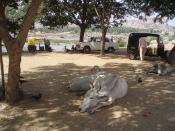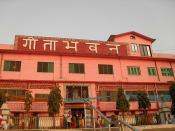INDUSTRY SNAPSHOT
India Brand Equity Foundation states the Indian FMCG (Fast Moving Consumer Goods) sector as the fourth largest sector in the economy with a total market size in excess of US$ 13.1 billion. The FMCG market is expected to grow from US$ 11.6 billion in 2003 to US$ 33.4 billion in 2015. Penetration level as well as per capita consumption in most product categories like jams, toothpaste, skin care, hair wash etc in India is low indicating the untapped market potential. Growing Indian population, particularly the middle class and the rural segments, presents an opportunity to makers of branded products to convert consumers to branded products. The period from year 2000-2004 saw slow growth of the FMCG sector. While 2004 was a difficult year owing to weaker demand and intense competition, in 2005, there was a reversal in trend and FMCG companies were able to get a larger share of the consumer's wallet.
One of the key performers in the Industry has been Dabur India Ltd. The following shows how it outshined the industry's performance from 2003-2006.
Source: www.dabur.com
DABUR INDIA LIMITED
History
Dabur India Limited is the fourth largest FMCG Company in India with interests in Health care, Personal care and Food products. Over its 120 years of existence, the Dabur brand has stood for goodness through a natural lifestyle. An umbrella name for a variety of products, ranging from hair care to honey, Dabur has consistently ranked among India's top brands. The company traces its origins to 1884, when Dr S.K. Burman set up Dabur as a proprietary firm for the manufacture of Ayurvedic drugs. Dr Burman set up the firm with a goal of meeting the healthcare needs of poor Indians. Initially the company marketed anallopathic drug, Plagin, to combat the then prevalent epidemic...


